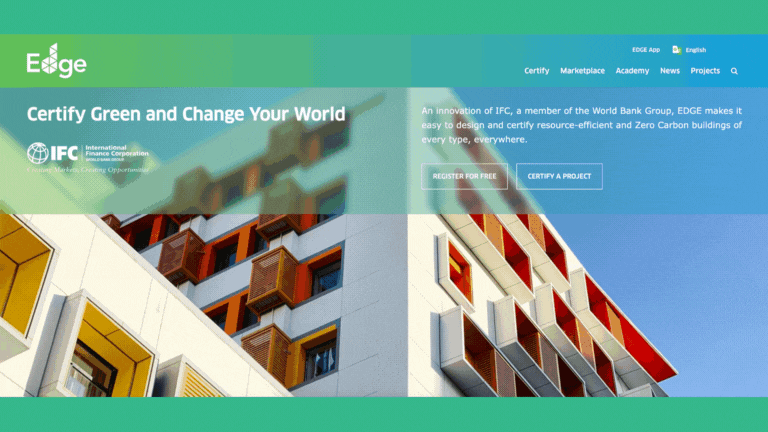What is Green Investment?
Green investment channels funds to sustainable practices that have environmental benefits and good financial returns. The approach fits in with the United Nations Sustainable Development Goals, with capital allocated today shaping ecosystems and the production and consumption of tomorrow.
Green investment is to increase level of financial flows (from banking, micro-credit, insurance and investment) from the public, private and not-for-profit sectors to sustainable development priorities.
Facts / statistics
about green investment in travel & tourism industry

Capital markets do react to environmental performance of firms. Firms with poor environmental performance experience lower stocks market returns and lower market value. Those with higher socially responsible credit ratings and are likely to raise capital with greater ease.
Source: Growing Green Business Investments in Asia and the Pacific by ADB
A list of green investment opportunities to address greater sustainability in tourism:
Source: Green Finance Platform
One of the primary barriers preventing tourism SMEs from pursuing green investment is the lack of knowledge on available green technologies and their potential return on investment. This can then be exacerbated by policy restrictions that hinder the importation of certain equipment, components, or even skills or inflate associated costs. SMEs can tackle these barriers by adopting a collaborative approach, sharing information about technologies, and building each other’s capacity.
Jessie F. McComb
Senior Private Sector Development Specialist
The World Bank
‘People’ are the heart of sustainability; they are the ones that affect sustainability whether by creating, managing, maintaining, or damaging it. Investing in ‘people’ in any capacity will help to equip relevant parties/communities with knowledge and ability to develop sustainability in tourism in an easier and more effective way.
Designated Areas for Sustainable Tourism Administration (Public Organization) - DASTA
Green investment in Asia Pacific, particularly the carbon emission reduction sector, is the second-most cost efficient at US $4.45 billion per megaton of carbon compared to Northern America’s $5.57 billion and Europe’s $6.18 billion.
Source: Global accommodation sector: The road to net zero emissions by EY Parthenon, Booking.com, and OC&C
Green investments are the basis for a resilient tourism enterprise. It enables cost reduction in operation through renewable energy use and shorter supply-chains, covers climate adapted infrastructure which will directly impact insurance costs and enable (extended) seasonal operations thereby impacting turn-over, and reduces capital financing through concessional financing options that allows enterprises to remain competitive in a market where sustainability and nature positive operations are becoming regulated.
Wouter Schalken
Senior Sustainable Tourism Specialist, Asian Development Bank (ADB)
Operational ROI when investing in green might be negative for about five years, but the ROI generated by other variables (community, employees, customers) makes up for it. The main generator of positive impacts on the triple bottom line (accounting for economic, environmental and social sustainability) is the transparency with the caustomer about what makes the company sustainable and how that contributes to improving the experience of the customer.
Source: Greenloon
55%
of consumers will pay extra for products from businesses that invest in sustainability.
37%
of consumers look for traces of sustainable investments/commitments before making a purchase.
Source: Nielsen Study
World Tourism Day 2023 highlights the vital need to deliver investment for projects that work for Planet (by investing in sustainable infrastructure and accelerating green transformation), People (by investing in education and skills),and Prosperity (by investing in innovation, technology and entrepreneurship).
We are honoured to invite 3 experts from ADB, the World Bank, and DASTA to offer insights on the importance of green investments and provide guidance for smaller businesses and destinations on how to obtain investments.

QUESTION LIST
How does getting involved in green investment benefit a tourism business financially? Ans here
What are the main criteria ADB looks at when deciding to fund a green tourism project? For SMEs in the tourism sector: What are the preliminary steps to obtain green investments? Ans here
Please share with us a successful case study/ example where ADB has funded a tourism project that was both sustainable and replicable across different destinations. Ans here
Q1
Q2
Q3
What are some of the challenges that SMEs in the tourism sector face when pursuing green investments? What steps can they take to address these challenges? Ans here
What are some elements of success when designing and implementing green tourism projects? Ans here
Please share with us a successful case study/ example where the World Bank has funded a tourism project that was both sustainable and replicable across different destinations. Ans here
Why is investing in “people” important for the tourism industry to become more sustainable?
Ans here
From your experience working with local communities, what are the “People” aspects (e.g. education, infrastructures, skills training) in tourism that could use more attention and investments?
Ans here
Q1
How does getting involved in green investment benefit a tourism business financially?
Green investments are the basis for a resilient tourism enterprise. It enables cost reduction in operation through renewable energy use and shorter supply-chains. Cooling and heating are large costs centers for accommodation providers and transport in the largest contributor to GHG across the tourism sector. Investing in green energy reduces operating costs (over time). Green investments also cover climate adapted infrastructure – for example flooding mitigation for beach resorts or rock-fall/landslide prevention at mountain resorts which will directly impact insurance costs and enable (extended) seasonal operations thereby impacting turn-over.
Green investments can also reduce capital financing through concessional financing options. It further allows enterprises to remain competitive in a market where sustainability and nature positive operations are becoming regulated in both source markets and in destination and safeguard market connections through relevant information and booking platforms where sustainability is becoming a primary selection criteria.
What are some of the challenges that SMEs in the tourism sector face when pursuing green investments? What steps can they take to address these challenges?
One of the primary barriers preventing tourism SMEs from pursuing green investment, whether that be renewable energy, water conservation, or waste reduction, is the lack of knowledge on available green technologies and their potential return on investment. This can then be exacerbated by policy restrictions that hinder the importation of certain equipment, components, or even skills or inflate associated costs.
SMEs can tackle these barriers by adopting a collaborative approach, sharing information about technologies, and building each other’s capacity. They can also leverage tools like the International Finance Corporation’s EDGE Building Tool that can help businesses identify the best resource-efficient measures in which to invest and estimate the potential payback period of these investments. This type of knowledge is critical for securing finance and demonstrating bankable investment projects. SMEs can also initiate dialogues with their buyers and suppliers to determine the potential for value chain financing to enhance their sustainability.
Q2
What are the main criteria ADB looks at when deciding to fund a green tourism project? For SMEs in the tourism sector: What are the preliminary steps to obtain green investments?
ADB has climate financing at the core of its support to both the public and private sector across Asia and the Pacific. All projects need to meet measurable climate indicators. Decarbonizing the tourism sector requires a destination level intervention and ADB therefore designs projects that cover improved resource (attraction) management as well as tourism enterprise support. Depending on the market situation (emerging or mature destination), ADB identifies appropriate interventions in line with a country’s development objectives.
Criteria that are becoming more important include the number and location of tourism enterprises in need of retrofitting to energy-saving operations and improved waste (-water) management. Co-management of natural resources, particularly coastal & marine resources through partnerships between local government and private sector tourism operators can access financing through ADB (direct or through financial institutions).
SME financing support by ADB is normally delivered through national finance institutions which allows ADB’s development support to reach scale by strengthening local capital markets.
What are some elements of success when designing and implementing green tourism projects?
There is compelling evidence to demonstrate the tourism sector’s potential to promote greening by generating revenues to support species conservation, protected areas, and community development. The World Bank’s Banking on Protected Areas study found that tourism in or near protected areas can yield significant income and benefits for local communities. However, tourism, like any other economic activity, can have negative environmental externalities such as GHG emissions, pollution and overuse of natural resources, and environmental degradation resulting from poorly managed investments or over-tourism. From a design perspective, tourism projects should ensure that indicators are aligned with sustainability goals that prioritize long-term impacts over growth in arrivals and assemble multi-sectoral teams to design and deliver activities based on best practices, strategic planning, and integrated approaches. From a policy reform perspective, projects should redirect countries’ efforts towards tourism market segments that seek sustainable forms of tourism, increase coordination across ministries engaged in green tourism development, and mandate emissions reductions as part of tourism sustainability standards or certification programs.

Q1
Why is investing in “people” important for the tourism industry to become more sustainable?
Because ‘people’ are the heart of sustainability; they are the ones that affect sustainability whether by creating, managing, maintaining, or damaging it. Therefore, investing in people is especially important in the tourism industry where sustainability is key in the fight against the over-tourism problem that damages the destination and local way of life in many places. DASTA works with sustainability as its goal by promoting community-based tourism in designated areas with support from relevant organizations under the idea of Co-Creation (Co-Thinking, Co-Planning, Co-Acting, Co-Responsible, and Co-Benefiting) and Co-Ownership– where every party must work together in every development step for the common benefits and sustainability in the local area.
‘People’ is the center of our work, and the most important factor in the development of any sustainable community-based tourism and must be properly supported. Investing in ‘people’ in any capacity will help to equip relevant parties/communities with knowledge and ability to develop sustainability in tourism in an easier and more effective way. On the other hand, if the local communities/entities are not able to and are not willing to act for sustainable development, no sustainability can be maintained effectively even with outside help/support.
Q2
From your experience working with local communities, what are the “People” aspects (e.g. education, infrastructures, skills training) in tourism that could use more attention and investments?
Any investment in ‘people’ is important for the growth of sustainable tourism, however, each local community has different needs and will need support in different aspects, for example, some may need knowledge, skill workshops, promotion opportunities, or public facilities. Therefore, the investing entities should study the characteristics of each community and their needs to be able to effectively support and fill in on the areas where the locals lack in order to contribute most efficiently to local sustainable tourism development.
Some local communities may need to develop skills in online and offline marketing, promotion, or innovative craftsmanship, to elevate and promote their local resources. Some may need better facilities inside the destination areas (e.g. public toilets, lights, and parking spaces) to upgrade both the local and tourist’s living standards, as well as to increase tourism quality and the carrying capacity in the tourist sites. There is no fixed answer, as it depends on the context of each individual community.
Q3
Please share with us a successful case study/ example where ADB has funded a tourism project that was both sustainable and replicable across different destinations.
ADB’s financing and technical advice support appropriate infrastructure development, effective and efficient policies, regulatory protections, and marketing so tourism forms a dynamic sector able to grow businesses and meaningful jobs. It is a catalyst for all sectors of the population, often in more remote regions where work and improved incomes are needed most.
A good example, and replicated across South Asia and the Pacific Regions, is the Greater Mekong Subregion (GMS) Tourism Infrastructure for Inclusive Growth Project. This project, started in 2014 has successfully supported resident-owned and operated guesthouse and homestay SMEs with improved operating standards including environmental standards and banning single-use plastics. It enabled local entrepreneurs to derive income from tourism services across many, often rural destinations. It is designed with a holistic destination approach, whereby the project improved infrastructure in the public domain that created easier and safer access by tourists through all-weather surface roads, new footpaths, cycle tracks, public lighting and upgraded (river) ports. This has directly enabled a longer tourism season which in-turn has increase household revenue within local economies.
Please share with us a successful case study/ example where the World Bank has funded a tourism project that was both sustainable and replicable across different destinations.
The World Bank invests in both knowledge projects and on-ground operations in our client countries. The most successful tourism operations on ground start with a strong knowledge base and are informed by sectoral expertise. One excellent example of how the World Bank implements this approach is through the Sustainable and Resilient Tourism on Small Islands and in Coastal Destinations Project that aims to provide the knowledge and tools for countries to increase their tourism competitiveness, sustainability and resilience. The knowledge project, supported by the World Bank’s PROBLUE umbrella, multi-donor trust fund, provided blue tourism policy guidance and tools, developed an interactive database of blue tourism resources, and explored sustainability trends in tourism consumers. The project is currently conducting circular economy assessments in three West Africa countries to determine both tourism industry specific and economy wide investments required to green the tourism sector. The knowledge develop through this project directly informed the Cabo Verde Resilient Tourism and Blue Economy Development Project and the Tourism Diversification and Resilience in the Gambia Project that aim to increase diversification and resiliency of the tourism sector in each country.






























